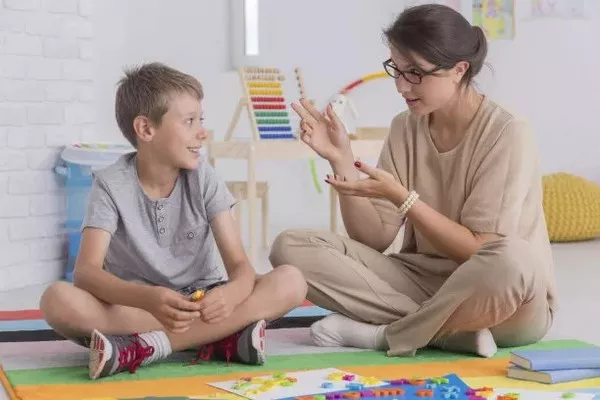Attention Deficit Hyperactivity Disorder (ADHD) is a neurodevelopmental disorder that affects millions of individuals worldwide. While often associated with hyperactivity, there is a subtype known as inattentive ADHD, which can present unique challenges for those who experience it. Individuals with inattentive ADHD often struggle with focus, organization, and completing tasks. As a supporter—be it a friend, family member, or partner—understanding how to effectively provide support can make a significant difference in their daily lives. This article outlines practical strategies for supporting someone with inattentive ADHD, fostering understanding, and creating an environment conducive to success.
Understanding Inattentive ADHD
Inattentive ADHD is characterized by a persistent pattern of inattention that interferes with functioning or development. Unlike the hyperactive-impulsive subtype, individuals with inattentive ADHD may appear to be daydreaming, forgetful, or disorganized. Common symptoms include:
Difficulty sustaining attention: Individuals may find it hard to concentrate on tasks, especially those that require prolonged mental effort.
Forgetfulness: They may frequently forget to complete chores, return calls, or keep track of appointments.
Disorganization: Managing tasks and responsibilities can be challenging, leading to messy living spaces or misplaced items.
Difficulty following instructions: They may struggle to complete tasks that require multiple steps, leading to incomplete work.
Understanding these symptoms is crucial for offering appropriate support. Recognizing that these behaviors are not a result of laziness or lack of motivation but rather a manifestation of a neurodevelopmental condition is essential in fostering empathy and patience.
Practical Strategies for Support
Supporting someone with inattentive ADHD requires a thoughtful approach that emphasizes understanding, communication, and practical strategies. Here are several effective ways to provide support:
1. Educate Yourself About ADHD
The first step in supporting someone with inattentive ADHD is to educate yourself about the condition. Understanding its symptoms, challenges, and how it affects daily life can foster empathy and patience. There are numerous resources available, including books, articles, and reputable websites, that provide insights into ADHD and its impact. This knowledge will help you better understand their experiences and offer appropriate support.
2. Encourage Professional Help
If the individual has not already sought professional help, encourage them to do so. A qualified mental health professional can provide a comprehensive evaluation and recommend treatment options, including therapy, medication, or lifestyle changes. Supporting them in this journey demonstrates your commitment to their well-being.
3. Practice Patience and Empathy
Individuals with inattentive ADHD may sometimes frustrate others due to their forgetfulness or disorganization. It is vital to approach these situations with patience and empathy. Acknowledge that they may not be able to control certain behaviors and that it can be frustrating for them as well. Offering a compassionate ear can help them feel understood and supported.
4. Establish Clear Communication
Effective communication is essential in supporting someone with inattentive ADHD. Here are some strategies for clear communication:
Be Direct: Use straightforward language when discussing tasks or responsibilities. Avoid ambiguous instructions that may lead to confusion.
Summarize Key Points: When discussing important information, summarize key points to reinforce understanding. This can help the individual retain essential details.
Use Visual Aids: Consider using written notes, checklists, or diagrams to convey information. Visual aids can enhance understanding and memory.
5. Create a Structured Environment
A structured environment can significantly benefit someone with inattentive ADHD. Here’s how you can help:
Organize Shared Spaces: Keep common areas organized and clutter-free. Use storage solutions to minimize distractions and create a more manageable environment.
Establish Routines: Help them establish daily routines for tasks like waking up, working, and completing household chores. Consistent routines can provide structure and predictability.
Break Tasks into Smaller Steps: Encourage them to break tasks into smaller, manageable steps. This can make overwhelming tasks feel more achievable and less intimidating.
6. Set Realistic Goals
Goal-setting can be a powerful motivator. Work with the individual to set realistic and achievable goals. Consider using the SMART criteria—Specific, Measurable, Achievable, Relevant, and Time-bound. Celebrate their successes, no matter how small, to boost their confidence and motivation.
7.Offer Reminders and Encouragement
Inattentive ADHD can lead to forgetfulness, making reminders particularly helpful. Here are some strategies for providing reminders and encouragement:
Use Technology: Encourage the use of digital tools such as calendar apps, reminder alerts, or task management apps. These tools can help them keep track of appointments, deadlines, and important tasks.
Check-in Regularly: Offer gentle reminders for upcoming tasks or commitments. Checking in can help them stay focused and organized without feeling overwhelmed.
Provide Positive Reinforcement: Recognize and praise their efforts and accomplishments. Positive reinforcement can boost their self-esteem and motivation.
8. Encourage Healthy Habits
Healthy lifestyle choices can have a positive impact on managing ADHD symptoms. Encourage the individual to adopt the following habits:
Regular Exercise: Physical activity can help improve focus and reduce impulsivity. Encourage them to engage in regular exercise that they enjoy.
Balanced Diet: A nutritious diet can contribute to overall well-being. Discuss the importance of a balanced diet rich in fruits, vegetables, whole grains, and protein.
Sufficient Sleep: Sleep plays a crucial role in cognitive functioning. Encourage good sleep hygiene, including maintaining a regular sleep schedule and creating a calming bedtime routine.
9. Be a Listening Ear
Sometimes, individuals with inattentive ADHD just need someone to listen. Create a safe space where they can express their feelings and frustrations without judgment. Your willingness to listen can provide emotional support and foster a sense of connection.
10. Join Support Groups
Consider exploring local or online support groups for individuals with ADHD and their families. These groups can provide valuable resources, share experiences, and offer a sense of community. Encouraging the individual to participate can enhance their support network and provide additional coping strategies.
The Role of Self-Care for Supporters
Supporting someone with inattentive ADHD can be challenging, and it is essential to prioritize your self-care as well. Here are some strategies for maintaining your well-being:
Set Boundaries: While providing support, it is essential to establish boundaries to protect your mental health. Know your limits and communicate them clearly.
Seek Support: Consider joining support groups for friends and family members of individuals with ADHD. Sharing experiences with others in similar situations can provide valuable insights and emotional support.
Engage in Self-Care Activities: Prioritize activities that bring you joy and relaxation. Whether it’s exercise, hobbies, or spending time with loved ones, taking time for yourself is crucial.
Conclusion
Supporting someone with inattentive ADHD requires understanding, patience, and practical strategies. By educating yourself about the condition, encouraging professional help, and creating a structured environment, you can make a significant difference in their daily lives. Effective communication, setting realistic goals, and promoting healthy habits are essential components of support.
Remember that supporting someone with ADHD is a journey, and it is normal to encounter challenges along the way. Your compassion, encouragement, and willingness to listen can create a profound impact on their well-being. As you navigate this journey together, fostering an environment of understanding and support will lead to stronger connections and improved quality of life for both of you.
Related topics:




























